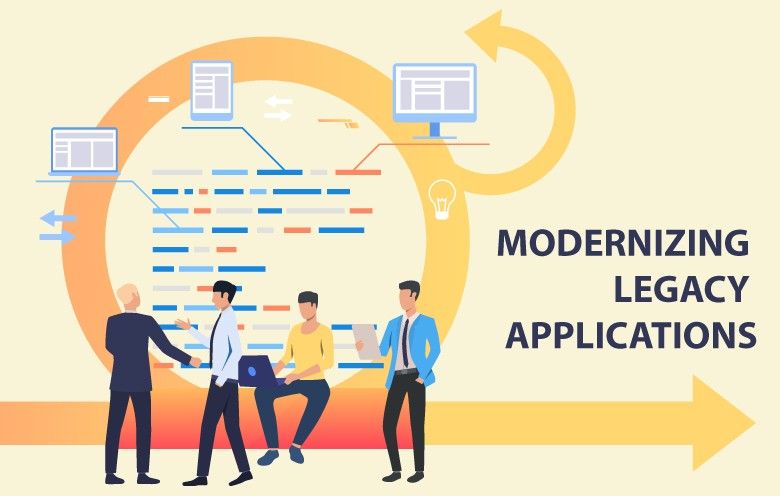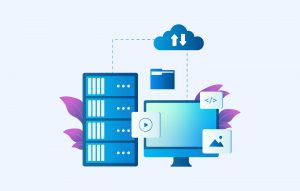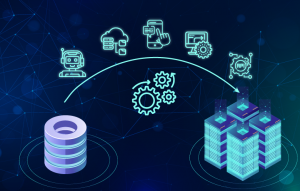The process of remodeling or renovating a legacy system into a modern structure to minimize IT costs, develop flexibility, teamwork and constancy is legacy modernization. It is like updating software. By modernizing legacy systems, you get the power and potency of your old applications with current technologies and software to build a stronger platform for business.
The first step to move from legacy to modern applications is to identify, assess and mitigate the risks and rewards of IT modernization initiatives. Rather than undertaking a complete software review and replacement, most companies choose to upgrade existing legacy systems to maintain the value of their legacy investment. Industry veterans say app upgrades are not a stand-alone exercise.
An outdated modernization process is initiated when organizations are stuck between servicing old and expensive equipment. This is because old equipment cannot operate with new technologies. And upgrading the infrastructure to use a more appropriate platform to support your business goals becomes a big deal.
Let’s look at why modernize legacy systems or a few benefits of replacing legacy systems
Legacy upgrades may seem like a simple and logical solution when dealing with systems that are several decades old and need improvement to enhance performance. However, by modernizing legacy applications, you can take better advantage of improved technical features, reduce workflow bottlenecks, increase business responsiveness and pave the way for growth. Upgrading legacy systems can help your business grow and keep pace with technological advancements.
The efficiency you get from modernizing legacy system will make your server processes smoother and benefit your customers as well. You will also be pleased with the additional flexibility achieved when you digitally transform legacy systems that allows you to optimize business operations whenever required.
In addition, the modernization of legacy applications is leading to wider adoption of open, flexible and networked systems to ensure that businesses are technologically relevant and meet changing customer expectations.
Application modernization makes integration easy, inexpensive and compatible with the latest customer technologies. In addition, next-generation applications can improve efficiency by facilitating the seamless migration of data. They are capable enough to migrate to rich and scalable Service-Oriented Architecture (SOA)-based cloud platforms and systems that drive cloud computing, DevOps and big data.
Rather than replacing an old system and building a new one from scratch, application modernization services enable companies to merge what’s still relevant from current software and create something new.
Application modernization takes time. Hence, it is preferred to define the scope of legacy system modernization. This helps in selecting a low-risk approach that focuses on core system improvements instead of recreating what currently works. For that, it is crucial to understand the know-how of your current IT landscape modernization. Consider knowing the do’s and don’ts of modernizing your company’s IT infrastructure.
Legacy system modernization and digital transformation
Companies struggle to speed up digital transformation and when they have to work with legacy technologies, it becomes difficult to attend to data quality concerns. Maintaining data quality is important for creating a strong data infrastructure to carry on real-time analytics.
Systems that are not flexible enough to meet the needs of digital business are more likely to be held accountable. This can often require a process redesign to fill the operating process gap from the legacy system. It can also offer an opportunity to improve and optimize business processes.
If companies want to realize the full benefits of digital transformation, they must replace traditional technological systems with better and more advanced solutions. On the other hand, legacy system transformation can help employees maintain a growth-oriented mentality and encourage improvement and innovation. Satisfied employees and modern systems can also improve your organization’s position to hire other talents who can drive more business growth.
As a result, your important systems are expected to be more dependable and have less downtime. While the shift from inconvenient legacy IT to flexible IT with digital technology can be complex and difficult, it is important to meet today’s IT needs as well. However, for many companies, decades of legacy technology systems that are still used today are a major obstacle to truly disruptive digital transformation.
Despite the challenges and risks associated with legacy software, some companies still lack initiatives to modernize legacy software.
The role of user experience (UX) in legacy modernization and its benefits
Flexible digital experiences have become a major expectation when it comes to online or mobile apps for both end consumers and business users. This makes UX a key aspect of legacy modernization. Upgraded software provides you with a competitive edge to develop your customer base while meeting your bottom line. Competition is another common and compelling reason for software upgrades.
New competitors are usually not burdened with outdated technical debt, systems and processes, which makes them more flexible. However, to operate in a world that has mostly transformed digitally, it is your company’s systems and software that can help or hinder your ability to grow and maintain your competitive edge. Hence, you must digitize your business methods to stay competitive.
While some of the benefits of legacy upgrades, such as increased productivity and cost savings, are likely to be immediately apparent, there are less obvious benefits that can make a big difference to your business in the long run.
The final say
If a company is not able to modernize its IT systems, it is most likely to lag behind other companies in the industry, even if it uses modern business practices. However, as companies modernize outdated systems, they often update their software to include modern security methods that protect their information from breaches. To know more about how modernizing your legacy systems would be beneficial for your business and to create a roadmap for upgrading the legacy system, talk to our experts.









